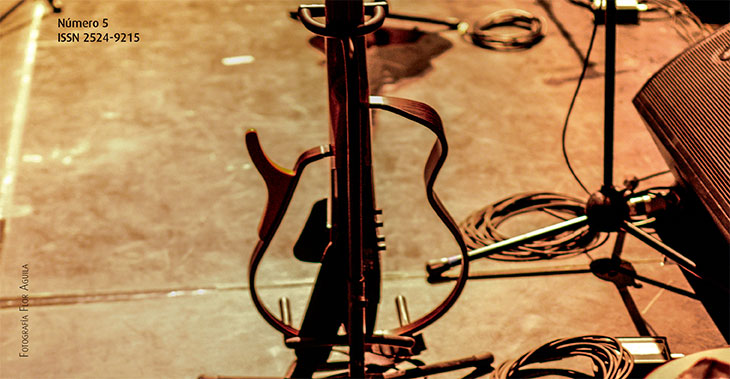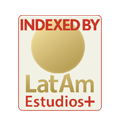The Jazz Band and tipical orchestra in fevro. Creative processes in arragements and compositions
DOI:
https://doi.org/10.24215/25249215e001Keywords:
Processos criativos, arranjo, composição, música popular, frevoAbstract
O trabalho discorre sobre resultados parciais obtidosnos recentes projetos de pesquisa sobre processoscriativos em música popular do autor dentro dogênero do frevo. Esses projetos tiveram como objetivoregistrar a produção para a formação idealizada(ensemble brasileiro), dentro da relação tensionalentre ela e antecedentes históricos (orquestrastípicas brasileras/Jazz Bands), bem como com osagrupamentos posteriores chamados de Big Bands.Downloads
References
Amorim, M. A. (2008). 100 anos de Frevo: irreverência e tradição. Recife, Brasil: Folha de Pernambuco.
Capiba y Moraes E. (2007). 100 Anos de Frevo [Partitura]. Recife, Brasil: Fundepe.
Cascudo, L. da C. (2002). Dicionário do Folclore Brasileiro. San Pablo, Brasil: Global.
Coltrane, J. (1960). Count Down. En Giant Steps [CD]. Los Ángeles, Estados Unidos: Atlantic Records.
Davis, M. (1954). Tune-Up. En Cookin’ with the Miles Davis Quintet [CD/LP]. Nueva Jersey, Estados Unidos: Prestige.
Dias, G. M. (2013). Airto Moreira: do samba jazz à música dos anos 70 (1964-1975) (Tesis de Maestría). Universidad Estatal de Campinas, Campinas, Brasil.
Estudio Cantareira. (25 de junio de 2013). Bairro dos Afogados (Paulo Tiné) – Ensamble Brasileiro - Barrio de Afogados (Paulo Tiné) [Archivo de video]. Recuperado de https://www.youtube.com/watch?v=IGu9r-oCbJI
Gaspar, L. (21 de agosto de 2009). Batutas de São José (bloco carnavalesco) [Entrada de blog]. Recuperado de http://basilio.fundaj.gov.br/pesquisaescolar/index.php?option=com_content&view=article&id=495
Gismonti, E. (1996). Strawa no Sertão. En Meeting Point [CD]. Múnich, Alemania: ECM records.
Guest, I. (1996). Arranjo. Río de Janeiro, Brasil: Lumiar.
Lobo, E. (1967). No Cordão da Saideira. En EDU [CD/LP]. Río de Janeiro, Brasil: Philips.
Nascimento, S. (2011). Duda no Frevo (Arr. Paulo Tiné). Movimiento Elefantes [CD]. Recuperado de https://soundcloud.com/movimentoelefantes/10-duda-no-frevo-big-band-da.
Piedade, A. (2011). Perseguindo fios da meada: pensamentos sobre hibridismo, musicalidades e tópicas. Per Musi, (23), 103-112.
Silva, L. D. (Org.). (1998). Blocos Carnavalescos do Recife: origens e repertorio. Recife, Brasil: Governo do Estado de Pernambuco.
Telles, J. (2012). Do Frevo ao Manguebeat. São Paulo, Brasil: 34.
Tiné, P. J. de S. (2014a). Harmonía: Fundamentos de Arranjo e Improvisação. San Pablo, Brasil: Rondó.
Tiné, P. J. de S. (2014b). O arranjo de Pixinguinha para Gaúcho de Chiquinha Gonzaga: a Orquestra Típica a caminho da Big Band. Ponencia en el 24.˚ Congresso Nacional da ANPPOM. São Paulo, Brasil.
Tiné, P. J. de S. (2016). Procesos Creativos en arreglos y composiciones del genero Choro para Jazz Band/Orquestra Típica. Vortex, 4(3).
Downloads
Published
How to Cite
Issue
Section
License
The acceptance of the manuscript by the magazine means the non-exclusive cession of the property rights of the authors in favour of the editor, who allows the reuse, after publication (post print), under a license Attribution-NonCommercial-NoDerivatives 4.0 International.
According to these terms, the material can be copied and redistributed by any means or in any format as long as a) the author and original source of the publication are quoted (magazine and URL of the work), access to the license is provided and whether changes have been made is mentioned; and b) the material is not used for commercial purposes.
The cession of non-exclusive rights means that after the publication (post print) in Clang the authors can publish their work in any language, means and format; in such cases it must be mentioned that the material was originally published in this magazine. Such cession also means the authorization of the authors for the work to be collected by SEDICI, the institutional archive of the Universidad Nacional de La Plata, and to be spread in the databases that the editorial team considers appropriate to increase the visibility of the publication and its authors.
Moreover, the magazine encourages the authors to deposit their productions in other institutional and thematic archives under the principle that offering the society the scientific and academic production without any restrictions contributes to a greater exchange of the global knowledge.












 </a >
</a >












